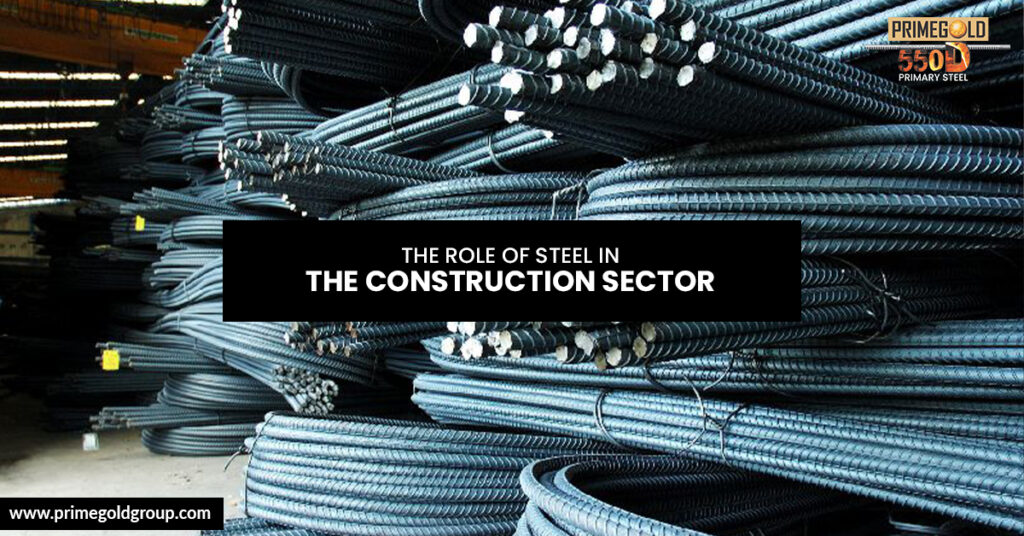Steel is a crucial component of the building industry. It is utilized in various products, including industrial machinery, bridges, and structures. It is vital for every building project because of its strength and endurance. You will discover the numerous attributes of steel and its use in the building sector in this article.
Primary Steelmaking
The production of steel is crucial to the building sector. According to the World Steel Association, more than 1.7 million tonnes of steel are produced annually.
Steel is a flexible alloy that is frequently employed in several applications. Typical applications include the construction of washing machines, cars, and bridges. Additionally, steel is a highly recyclable material.
It takes two steps to make steel. Pig iron and carbon are mixed together in the first stage. In the second phase, impurities, pollutants, and other compounds are removed by a refining procedure.
Iron is the fundamental component of steel. Manganese and silicon are the only two components that makeup steel. Dissolved gases also play a significant part in regulating the final product’s quality.
The basic oxygen furnace (BOS) and electric arc furnace (EAF) processes are the two major techniques to make steel. Both processes make use of molten iron, leftover steel, and carbon. Steel from recycled scrap is used on the BOS route. The ladle technique is another name for it. On the other side, the EAF route employs 90–100% recycled steel.
High temperatures are used for the main process. A refractory substance that improves heat transmission surrounds the molten iron. It is heated to a temperature of between 1,600 and 2,000 °C. The molten steel is then cast after cooling in a mould. Slabs, billets, and blooms are the different categories for the final goods.
Stainless Steels
Stainless steel has been important in construction. It is used in industrial and commercial structures. It is typically alloyed with other elements to enhance the material’s characteristics. Among the most frequent applications are pipes, tanks, and kitchen appliances.
Stainless steel has a high level of corrosion resistance and a long service life. That is a low-carbon alloy. Usually, chromium and nickel are alloyed with it to boost toughness. It also doesn’t react with organic materials.
Corrosion resistance varies across different kinds of stainless steel. It’s essential to select the right grade for your application. The type of environment, sulphur dioxide, and chloride concentrations, as well as other factors, may influence the material selection.
Stainless steels are also resistant to acids and bases. They are very ductile and excellent for earthquake loads. They are easy to clean using regular, non-toxic cleaning solutions. They are extremely sturdy and require little upkeep. When their useful lives are through, they are simple to deal with and readily recyclable.
Certain stainless steel can be alloyed with nickel and molybdenum to boost their corrosion resistance. Structural engineers prefer these grades because of their durability and resistance to corrosive environments.
Contrasting Low-Alloy and High-Alloy Steel
Numerous projects call for the usage of low-alloy steel. It may be utilized in aerospace, autos, and structural components. It is formable, corrosion-resistant, and has a high tensile strength. Additionally, it is renowned for being economical and durable.
Nickel and carbon are used to make low-alloy steels. These alloying components contribute to improving the steel’s characteristics. They also improve toughness and hardness. They are quick and simple to stamp.
Based on their chemical makeup and heat treatment, these steels are categorized. They may be further broken down into four main categories. These include dual-phase, tempered martensite, bainite, and martensite.
Low alloy steels have a unique microstructure defined by an initial work hardening rate that rises with strain. It indicates that the formed section has a higher tensile strength than the unformed part. Heating the metal to a specific temperature is accomplished. The type of forged object will determine how slowly and heat treatment should be done in a furnace.
The industry uses alloy steel often. Vanadium, iron, manganese, and chromium are all present. These substances give the metal’s surface a thin oxide coating. The addition of chromium enhances its antioxidant capacity. The steel becomes more austenitic as a result of the manganese.
Rationalization
The analysis of steel components used in construction designs is offered. The foundation of this technique is the idea of the “utilization ratio” for structural parts. Numerous performance needs may be computed using the usage ratio. The element’s moment capacity serves as the equation’s denominator. It may be used to determine how much steel can be saved overall in structures.
It is critical to rationalize the use of steel in the building. A typical frame has 35% steel that is not being used. It results from the designers’ choice to set a maximum usage ratio. Buildings might be created with half the present quantity of steel. To evaluate the potential savings, though, more investigation is necessary.
The sensible use of steel in construction will increase a building’s adaptability. This may be accomplished by lowering the overall material utilization and the number of profiles in a construction. Additionally, a building’s ability to carry the same loads but have a lower utilization ratio can be achieved without sacrificing safety. Furthermore, if you are looking for the best steel bars, get in touch with us. Prime Gold is among the top brands in the construction industry.



